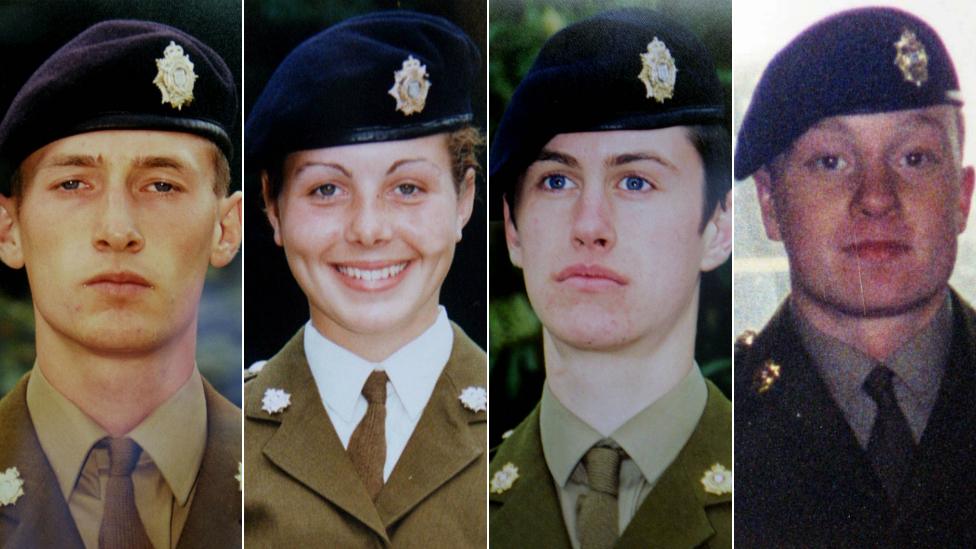Pte Cheryl James Deepcut inquest: Fatal shot 'not self-inflicted'
- Published

Pte Cheryl James was found dead at Deepcut barracks in 1995
A pathologist has cast doubt on claims that a teenage recruit at Deepcut Army barracks killed herself, suggesting someone else fired the fatal shot.
Prof Derrick Pounder, who was called in by Pte Cheryl James's family to review evidence, told her inquest he could find no soot around the wound.
He said it was "the critical issue" in determining firing distance.
Pte James, 18, from Denbighshire, was found dead from a bullet wound to the head at the barracks in November 1995.
She was one of four recruits to die at Surrey's Deepcut base in a seven-year period.
'Decisive issue'
Prof Pounder, a forensic pathologist, was engaged by Pte James's family to re-examine her body after it was exhumed in August 2015 following a previous inconclusive inquest.
He told the new hearing in Woking, Surrey, that contrary to suggestions by other expert witnesses, he believed marks on Pte James's face and hand were not soot, which they had said suggested the bullet had been fired from close range.
He believed the dark marks on her face were either dirt or bruising, adding that the "critical issue, the decisive issue, is the presence or absence of soot around the wound".
John Beggs QC, representing Surrey Police, suggested the pathologist might be embarrassed by his suggestion that the wound was inflicted by another person as there was no evidence to that effect.
But Prof Pounder denied he was embarrassed, adding: "My view is there's no soot on the face. It follows from that it was not self-inflicted. It follows from that it was inflicted by another."

The body of Pte Cheryl James was found near the perimeter fence
He compared photographs of Pte James's face with those of another, unnamed, soldier, who was known to have committed suicide.
The latter "clearly show the seared-in soot and propellant" and bits of soot next to the wound.
"When we turn to the photos of Miss James what we see are lacerations. What we don't see is any seared-in soot and propellant," he added.
He disputed earlier suggestions by a forensic ballistics expert that soot could enter the wound rather than remain on the skin around it if a bullet was fired at close range.
"This is not how the skin behaves in such cases," he said.
The hearing continues.
Who were the Deepcut four? Background to the deaths and timeline of events.

Privates Benton, James, Gray and Collinson died at Deepcut between 1995 and 2002
- Published20 April 2016

- Published18 April 2016

- Published11 April 2016

- Published23 March 2016

- Published21 March 2016

- Published18 March 2016

- Published20 June 2019
